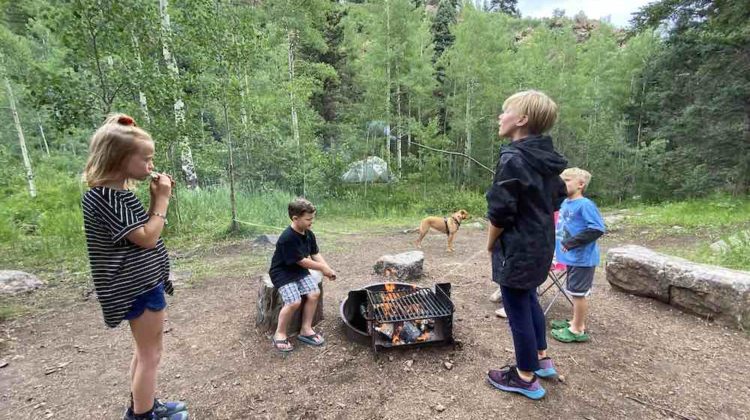
Whether you live in a busy city or far out in the sticks, camping is a great way to change things up and have an adventure. But what if you’ve never camped before? How do you prepare for your first campout? What if you do it wrong? Will people laugh at you? Could you get lost and never be found? Are bears going to eat you? Maybe.
Just kidding. No, none of that will happen. Camping is pretty easy and your first campout will not be as hard as you might think. While camping is all about pushing yourself outside of your comfort zone, it doesn’t have to be uncomfortable. That didn’t make sense. But it’s true. With a little planning, your first camping trip will be amazing. Sure, you might make some mistakes along the way, but don’t sweat it. It’s all part of the fun.
To get you started, here are the 8 questions everyone asks (but may be too embarrassed) about your first campout.
1. What should I drive on my first campout?
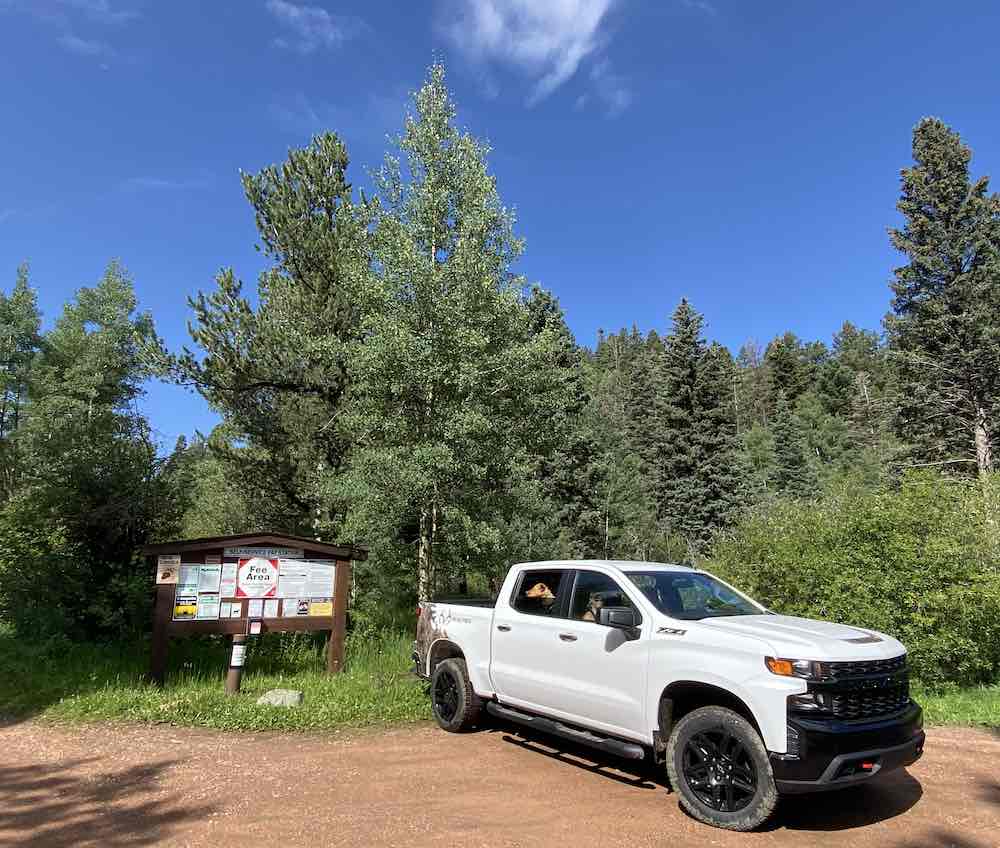 Chances are good you’ll be car camping on your first camping trip. And that’s great. Car camping is an awesome way to introduce yourself to the great outdoors because you can bring more creature comforts from home.
Chances are good you’ll be car camping on your first camping trip. And that’s great. Car camping is an awesome way to introduce yourself to the great outdoors because you can bring more creature comforts from home.
Now, don’t go thinking you need one of those $100,000 camper vans to go camping. You don’t. Your commuter car or minivan will do the job just fine for most campgrounds. But if your camping destination is on dirt roads, a 4×4 truck may be your best bet. I have camped hundreds, if not a thousand nights outdoors, and one of my favorite vehicles so far has been the Chevy Silverado.
For my family’s most recent campout, we drove a 2021 Silverado Z71 Trail Boss. It was the Real Tree edition. Those are the guys who make some of best camo apparel out there. They put their stamp of approval on the Silverado, so you know it’s a legit camping truck. Here are some deets to geek out on if you’re into that kind of thing:
- The Realtree Edition Silverado gets a 5.3L V-8 engine with a 6-speed transmission and is available with the 6.2L V-8 that will provide an SAE-certified 420 horsepower and 460 lb-ft of torque, paired with a 10-speed automatic transmission.
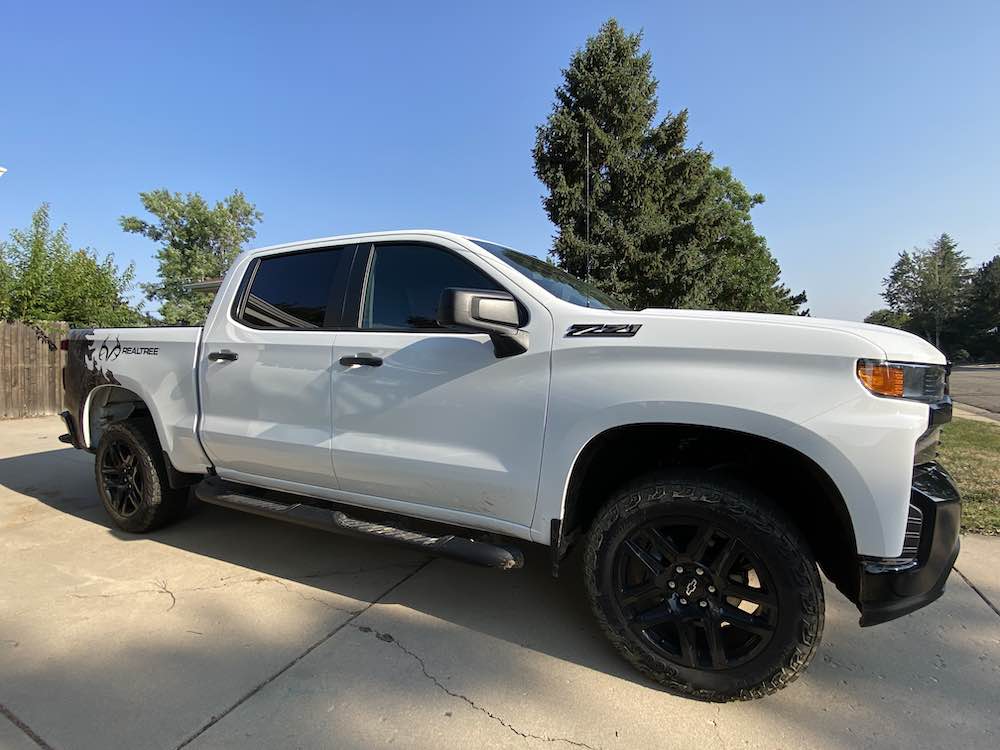
- My truck was set up with a 2-inch factory suspension lift, 20-inch black wheels with Goodyear Wrangler Territory MT On-Off Road Tires and the Silverado’s Z71 Off-Road Package, which includes monotube Rancho shocks, Hill Descent Control, automatic locking rear differential, and skid plates.
- The 2021 Silverado Realtree Edition is a limited-run truck that is also equipped with Silverado’s Durabed, which offers the most standard cargo capacity in the segment, 12 standard tie-downs and a high-strength, roll-formed steel bed floor. Awesome, right?
Scroll down to the bottom for more pics of this sweet truck!
2. What do I pack for my first campout?
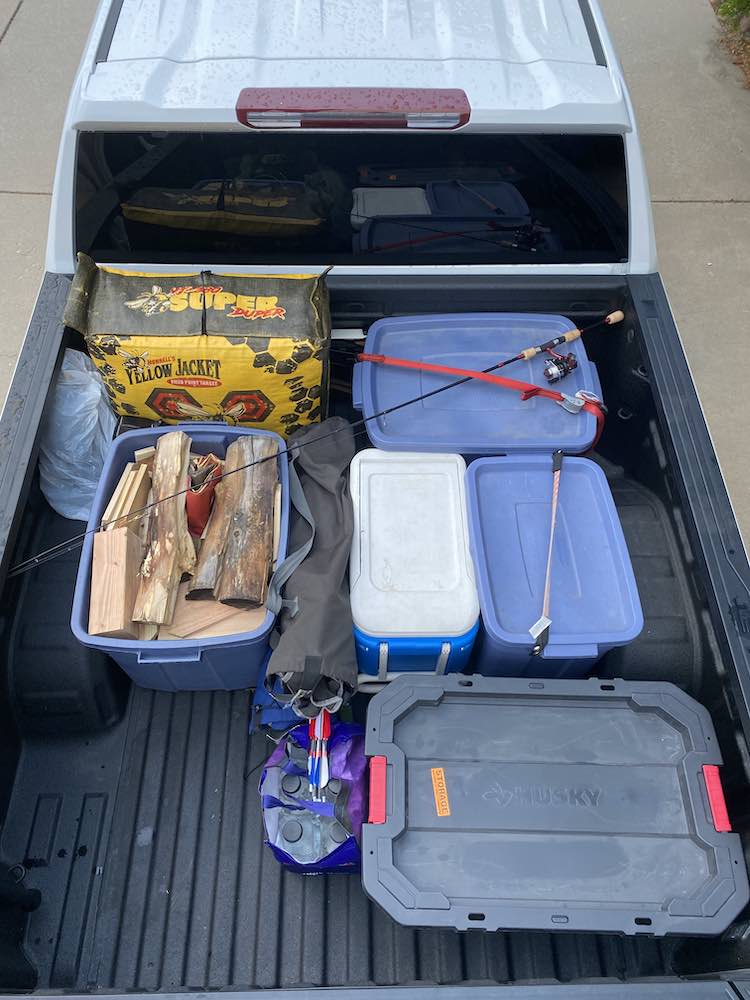
The great thing about car camping is that you can pack everything but the kitchen sink. Of course, you don’t want to overstuff your car either. So, here’s a rundown of what you need to bring. By the way, if you don’t have all of this equipment, you can borrow from friends, rent gear from a local outdoor shop, or find cheaper stuff at used gear sales or on sites like Craigslist.
Your 8 Camping Essentials
Tent. Choose a bigger tent. You don’t need the Taj Mahal, but a bigger tent will be more comfortable and give you space to organize your stuff.
Sleeping bag. Bags are classified by the coldest temperature they’ll keep you warm in. Choose a 3-season bag for the most versatility throughout the year.
Sleeping pad. These are inflatable pads to sleep on that cushion you from rocks, roots, and uneven ground. Insulated sleeping pads will also put a layer of warmth between you and the cold ground.
Camping stove. Propane fueled camping stoves make cooking meals outdoors a snap. Remember to also pack a couple of pans, a cooking spatula, cooking oil, salt and pepper, cleaning supplies, paper towels, and a couple of trash bags.
Cooler. It’s often a good idea to have two coolers; one for drinks and one for food. But if you have a large enough cooler to fit everything, then that’s ideal.
Headlamp. Remember that campgrounds don’t have lights, so at the very least bring a headlamp. Headlamps are better than flashlights as they keep your hands free. You can also bring battery powered lanterns to set on a table or in your tent.
Folding chairs. Many campgrounds have picnic tables, but do a little research beforehand. If they don’t have tables, bring some folding chairs.
Games. If you’re lucky enough to get far away from the city, you won’t have cell reception. That means no work calls, no emails, and also no streaming shows. Good! Bring some card games or travel games to pass the time. Try these games for starters >
3. How do I find a good campsite?
If your first campout is at an established campground, most of the sites will be thoughtfully designed. That means you’ll be hard pressed to find a bad site. But here are a few things to consider when choosing your campsite. The campsites near the campground entrance get the most traffic passing by and may be louder. Campsites next to the bathroom may be convenient when you’ve gotta go, but can also smell. If possible, look for a site with some tree cover for shade and protection from weather. However, avoid sites that have dead trees that may fall in a storm. Finally, look for a site that is flat to make sleeping in your tent more comfortable. If at all possible, you don’t want to sleep on an incline.
4. Do I need an expensive tent and how do I pitch it?
There are two pieces of equipment for your first campout that you shouldn’t skimp on. Your tent and your sleeping bag. Sure, you can make do with a cheap tent. Hell, you can get a good night’s sleep under a simple tarp. But a nice tent will last you a decade or more (I recommend the Big Agnes Copper Spur tent), protect you from the elements (ie: keep rain out and keep your stuff dry), and be easy to set up. Speaking of which, here are the basics of setting up a tent:
The 9 Keys to Pitching a Tent
- Find level ground. If the only ground you can find is at an angle, you’ll want to position the tent so your head will be uphill when you lay down inside.
- Brush away any large sticks, branches, or rocks.
- Lay the tent footprint or ground tarp flat on the ground with the shiny side up.
- Lay the tent body on top of the footprint with the head (often wider) facing uphill.
- Put the poles together by fully inserting each segment into the adjacent pole.
- Lay out the poles on top of the tent, aligning them with the grommets, or metal rings, on each corner.
- Attach the poles to the tent body using the tent clips or loops, and raise the tent up.
- Place the rain fly on top of the tent and secure it to each corner of the tent. Make sure the rain fly zippers match up with the tent doors.
- Insert the stakes straight down into the ground through the corner grommets of the tent and footprint. Use a medium-sized rock, if needed, to gently hammer the stakes to anchor each corner of the tent, door flaps, and guylines, which keep your tent more stable in strong winds. Leave just enough stake exposed so you can fit a finger under the hook end.
5. How do I cook meals on my first campout?
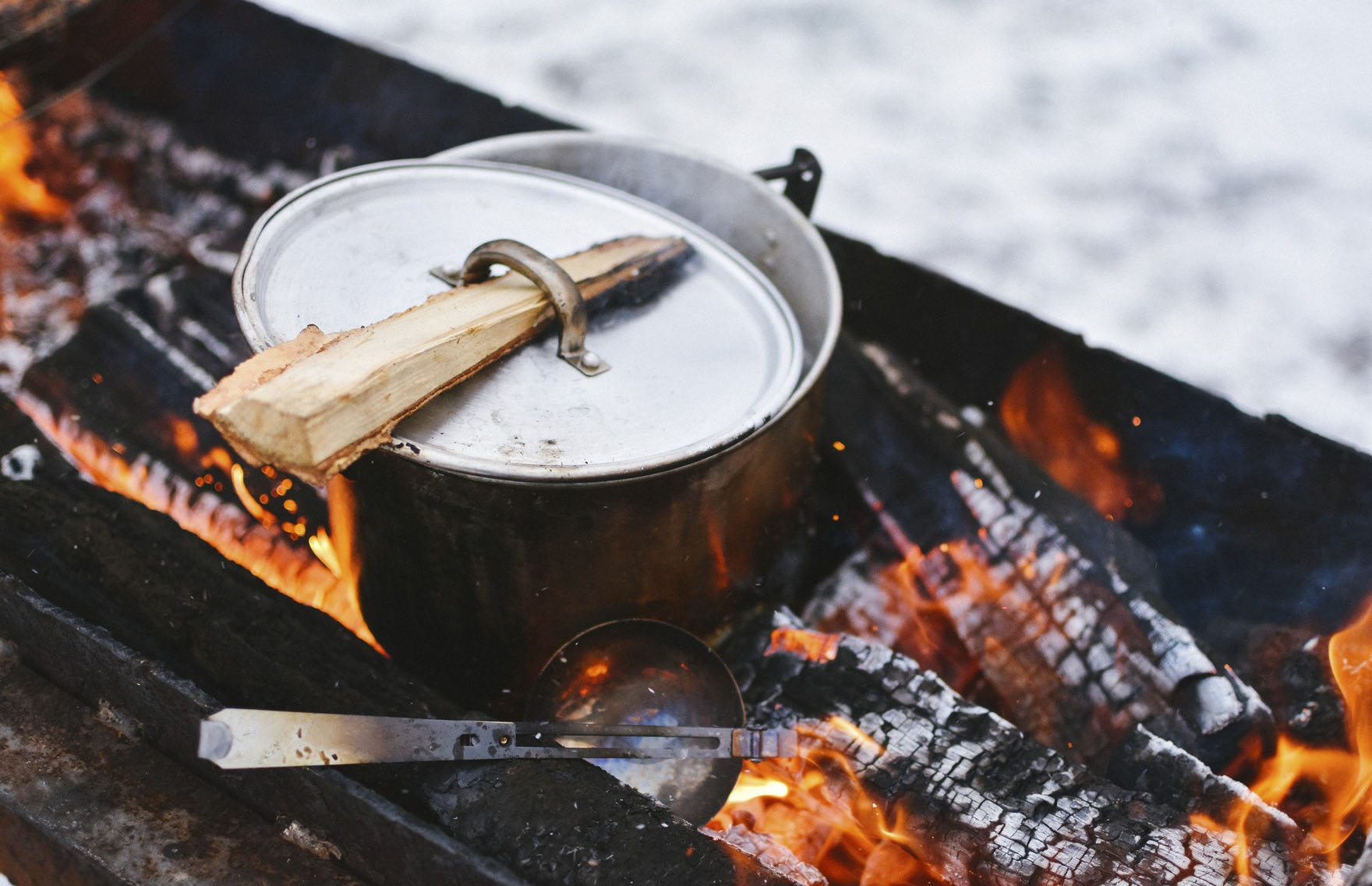 You may have lots of questions about how to cook a meal on your first camping trip. Do you need to buy expensive, dehydrated backpacking food? Are you stuck with only eating canned foods? Will you have to forage for food in the wilderness? Uh, no. It’s all good news here. Cooking at a campsite is not that different from cooking at home if you come prepared.
You may have lots of questions about how to cook a meal on your first camping trip. Do you need to buy expensive, dehydrated backpacking food? Are you stuck with only eating canned foods? Will you have to forage for food in the wilderness? Uh, no. It’s all good news here. Cooking at a campsite is not that different from cooking at home if you come prepared.
I recommend getting a camp stove like the Coleman Triton Propane 2-Burner Stove or the Primus Profile Propane 2-Burner Stove. They will both last a lifetime, and they make cooking at camp a breeze. You’ll need at least one fry pan. Bring your go-to teflon-coated pan from home or a good cast iron pan if you have one. And you’ll also need a pot for boiling water if you choose to cook pasta or rice. Don’t forget to bring cooking oil as well as salt and pepper and any other seasonings you like.
Quick & Easy Camping Meals
So, what to cook? You can literally cook anything you want at your campsite if you have all of the above. But I’ve got a few recommendations to get you started. One of my go-tos is cooking up a box of Pasta Roni Fettuccine Alfredo and mixing in flakes of Alaska Smokehouse smoked salmon. Pre-baked potatoes are an awesome meal too. Bake your potatoes at home, wrap them in foil, and then warm them up over your campfire or in a pot on your camp stove. Toss on your favorite toppings and you’ve got a gourmet meal in the woods!
My wife makes another recipe that is, hands down, one of my all-time favorites: fried chile rellenos. Yes! And she’s got a simple trick for making them super easily at camp. She uses wonton wrappers filled with shredded cheese and diced green chiles. That’s it. They’re amazing! And one more go-to recipe is Zatarain’s Jambalaya rice mix with sliced fried sausages and diced red peppers. I mean, c’mon! That doesn’t sound so bad, right?
6. What do I do if I get lost while camping or hiking?
This is a common question for first time campers. And it’s a good one. Even the most experienced campers get lost sometimes. Of course, it’s best to avoid getting lost in the first place by staying aware of your surroundings at all times. As you hike, look for landmarks like streams, meadows, large rocks, and odd-shaped trees. You should also pause every so often to look back and familiarize yourself with where you came from. But what do you do if you really become lost?
If you get lost, the most important rule to remember is to stop moving. Stay calm and stay in one place. The more you move around, the more lost you can become. Next, make some noise. If you have a whistle, give it three short blasts, each lasting three seconds. That’s the universal signal for help. Anyone within a half mile will hear your call and come find you.
7. What’s the most comfortable way to sleep while camping?
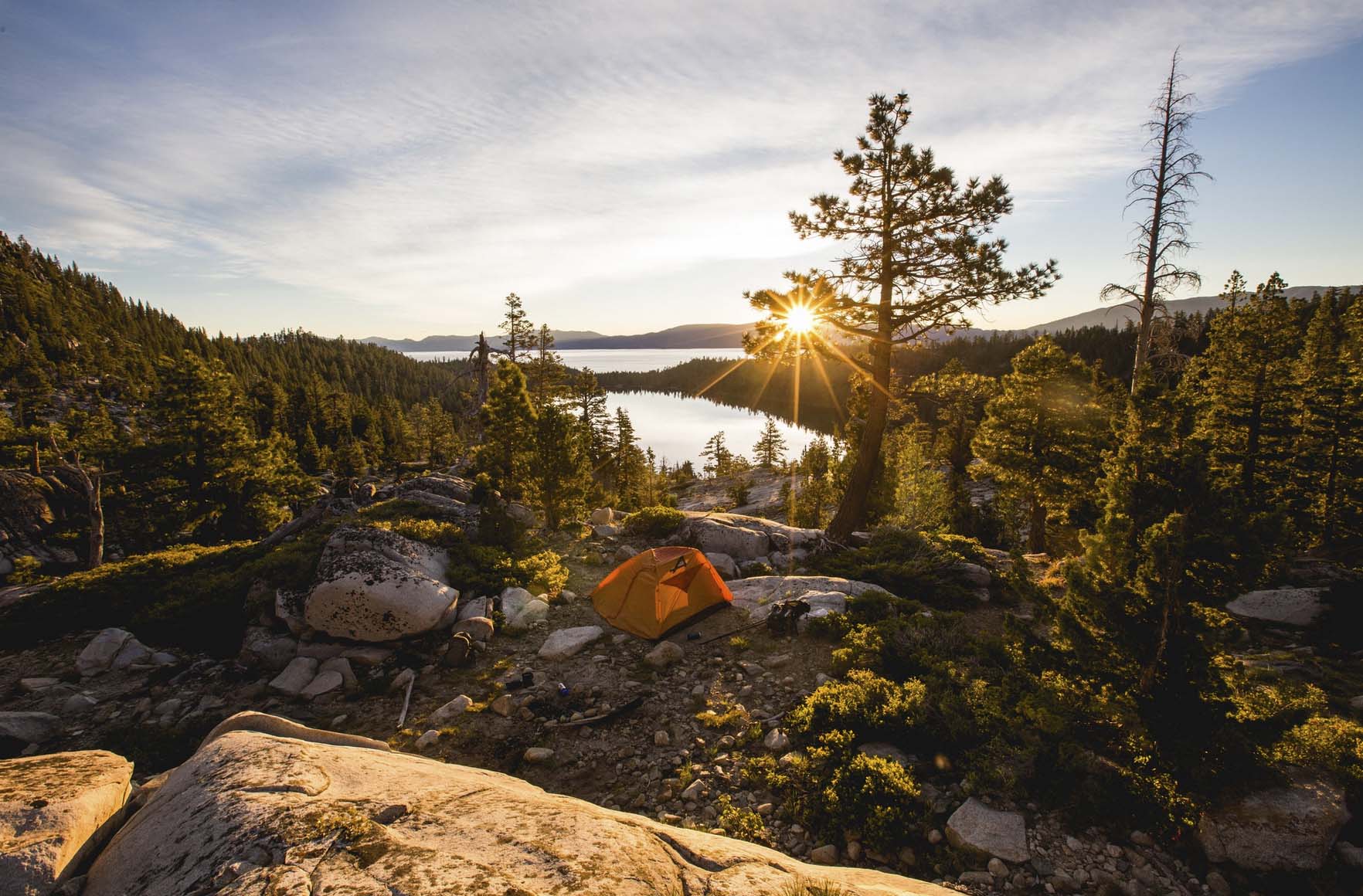 If you’ve never slept in a tent, let alone on the ground, your first campout may feel pretty daunting. But don’t worry. There are some sure-fire strategies that will make a huge difference for getting a good night’s sleep. We already talked about the importance of having a good sleeping bag and sleeping pad. And that’s the first strategy. Sleeping bags keep you nice and warm, and sleeping pads cushion the ground with an inch or more of inflatable bliss. Check out the Big Agnes Anvil Horn sleeping bag and the Big Agnes Air Core Ultra sleeping pad for starters. I’m a huge fan of Big Agnes gear. They make durable stuff that works great and they’re based in Colorado where I’m from, so that gives them extra points in my book.
If you’ve never slept in a tent, let alone on the ground, your first campout may feel pretty daunting. But don’t worry. There are some sure-fire strategies that will make a huge difference for getting a good night’s sleep. We already talked about the importance of having a good sleeping bag and sleeping pad. And that’s the first strategy. Sleeping bags keep you nice and warm, and sleeping pads cushion the ground with an inch or more of inflatable bliss. Check out the Big Agnes Anvil Horn sleeping bag and the Big Agnes Air Core Ultra sleeping pad for starters. I’m a huge fan of Big Agnes gear. They make durable stuff that works great and they’re based in Colorado where I’m from, so that gives them extra points in my book.
Don’t forget a pillow too. Since you’re car camping, you probably have room to bring your regular sleeping pillows. But if you don’t have room, or don’t want your pillows smelling like campfire, get yourself an inflatable pillow. I use the Trekology Ultralight Camping Pillow and it’s awesome.
Two More Strategies for a Good Night’s Sleep
Another strategy for sleeping comfortably on your first campout is the trusty cot. If you have room in your truck and you’re packing a big enough tent, cots are a great way to improve your sleep. They get you off the ground and give the feeling of bed at home. Try the Coleman Trailhead Camping Cot if you don’t already have one.
Last idea for you is to sleep in a hammock. Hammocks are amazing for stargazing on warm summer nights. They’re also great for feeling the cool night air on your face. Super relaxing. On cooler nights, you can still sleep in your sleeping bag to stay warm all night. This hammock from Firiner comes with a mosquito net and rain fly, and is one of the better (and cheaper) ones out there.
8. Where do I go to the bathroom when camping?
Last but certainly not least, this is maybe the most common question asked by people on their first campout. And what people really want to know is, how to take care of number two. Well, it’s not as difficult as you might think.
If you’re car camping, chances are good you’ll be in an established campground. Most campgrounds have bathrooms with toilets and sinks. That’s the easy one. More primitive campgrounds may downgrade facilities to a portapotty, but even that makes things pretty simple. So, what do you do if your campground doesn’t have those facilities? Or what if you’re out on a trail far from camp? You’re going to have to poop in the woods. Here are a few key tips.
First, always pack toilet paper and a small trowel, or what’s called a “poop shovel.” Get yourself the classic Coghlan’s Backpackers Trowel. Find a secluded spot that’s at least 200 paces away from any water source (river, creek, lake, etc.), trail, or campsite. Dig a hole in the ground about 12 inches deep. Squat over the hole and do your business. Toss your toilet paper in the hole and cover it all up with dirt. Congrats! You just successfully pooped in the woods. You also now know just about all you need to know for your first campout. Now, start planning your trip and have fun!
A FEW MORE CHEVY SILVERADO PICS BEFORE YOU GO!
Check out the cool camo details on the arm rests of this Realtree Edition Trail Boss:
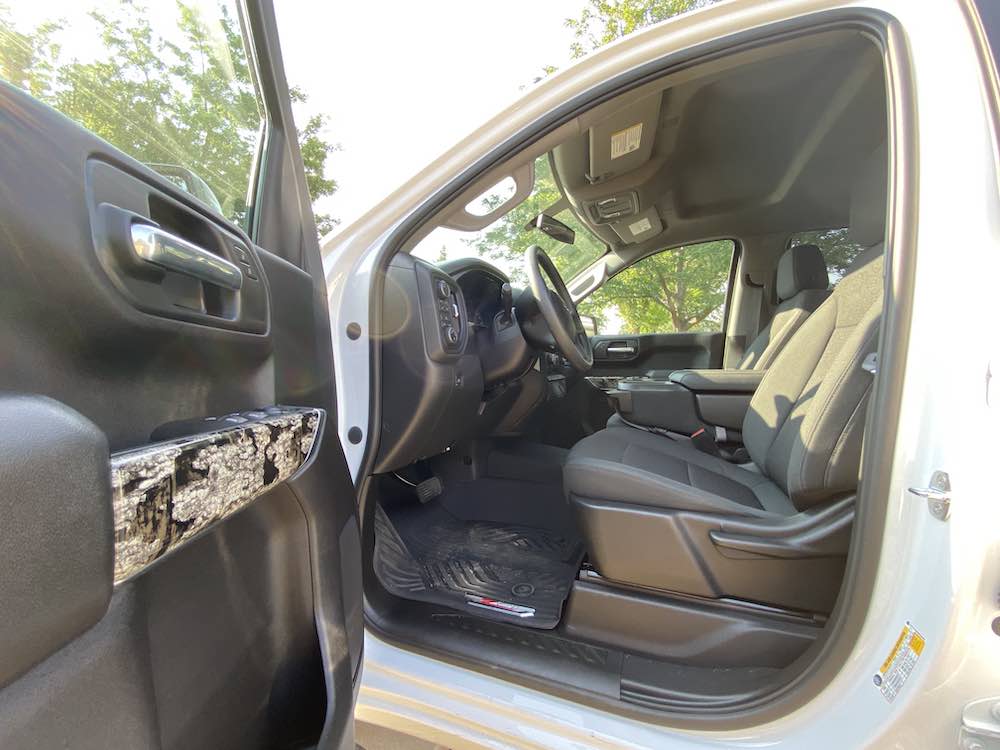
I love the spacious cab and simple dashboard that gives you just what you need and nothing you don’t.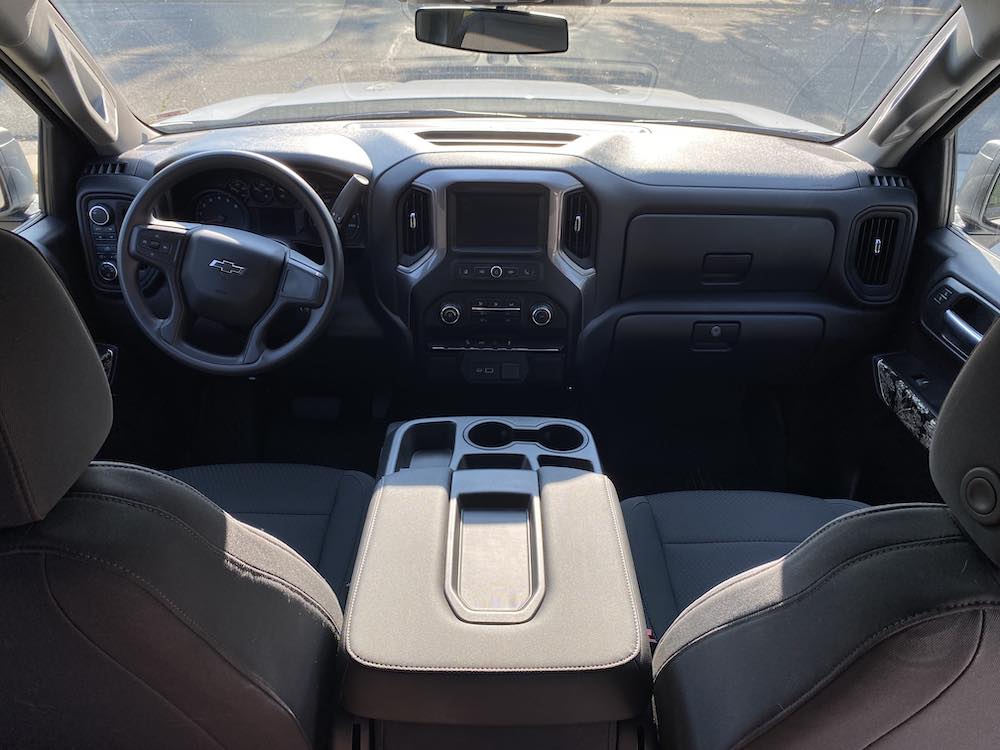
Now, check out the tailgate. The 2021 Chevy Silverado has the multi-flex tailgate this is AWESOME!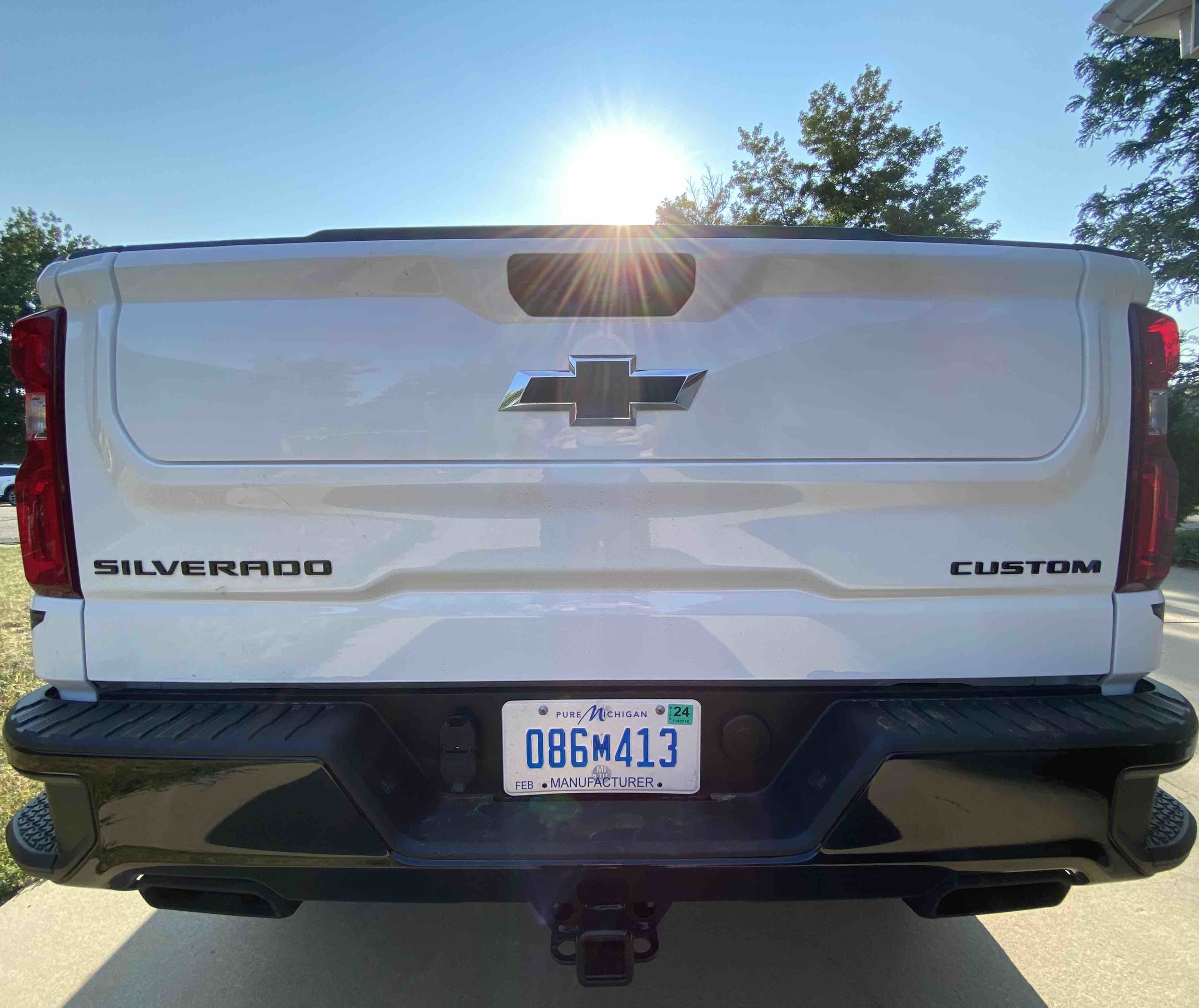
First, the top half folds down so you can use it as work space at a job site and set your laptop at chest level.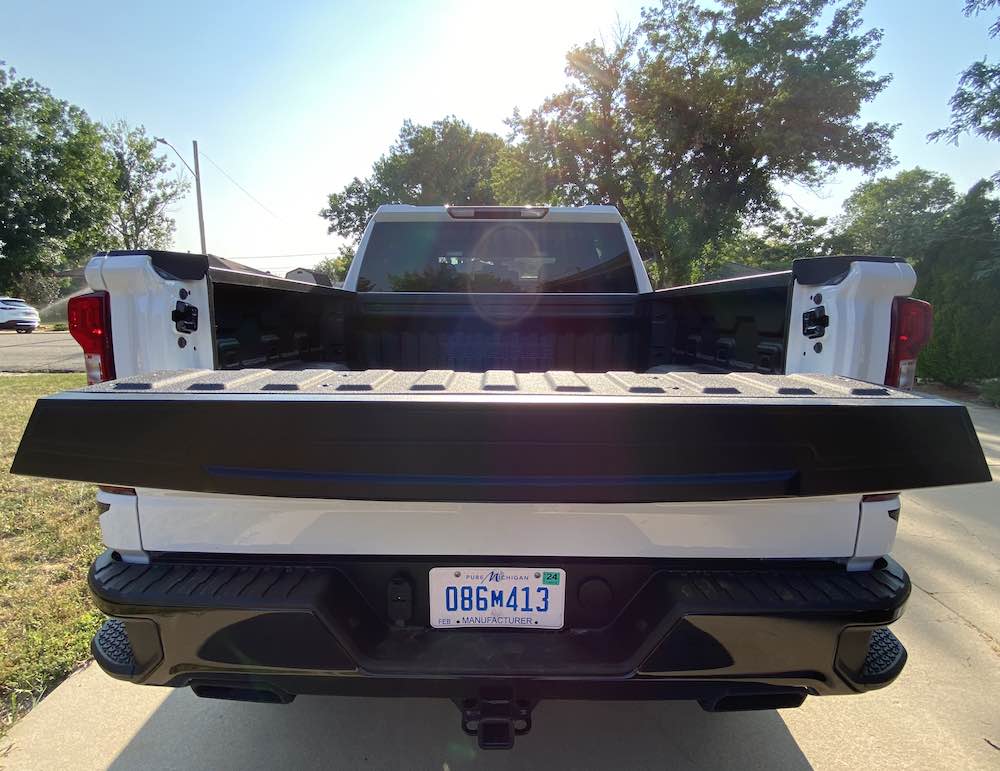
Then, you can fold the whole tailgate down to load up the bed easily.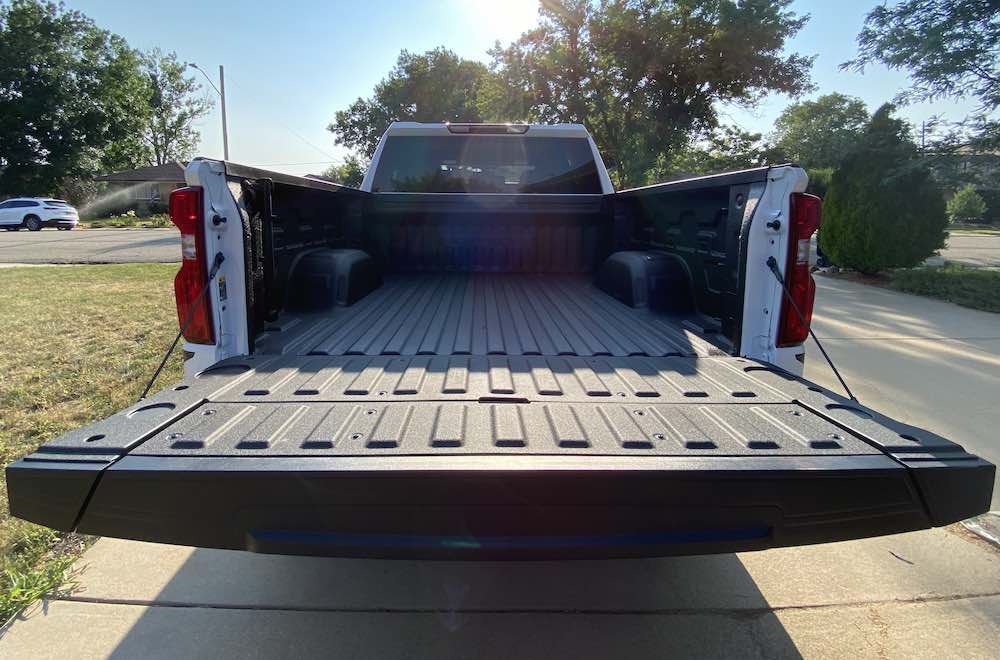
And finally, you can fold down a step that makes it easy to climb up and down from the bed. Genius.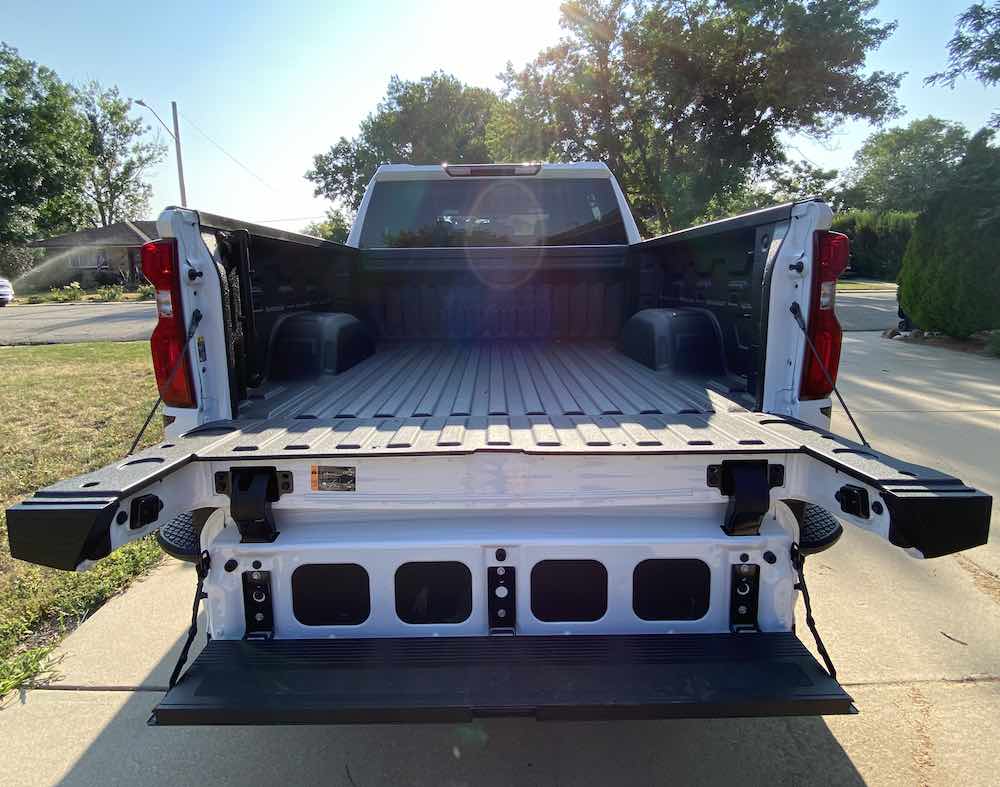

Leave a Reply
You must be logged in to post a comment.